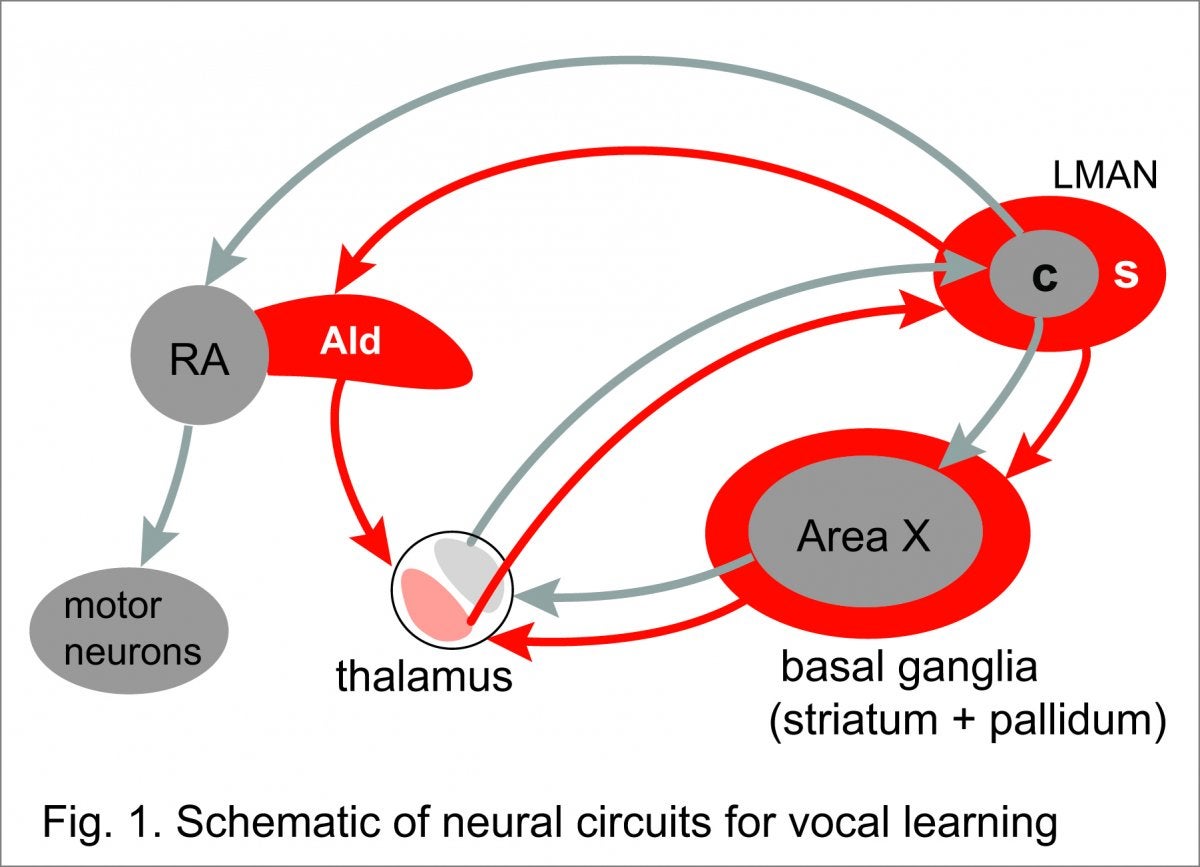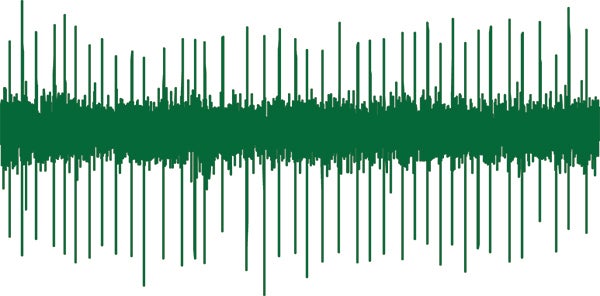I want to investigate how juveniles evaluate whether early song renditions are a good imitation of the tutor song, and how good imitations are reinforced, thus improving behavioral performance.
 My project will investigate how reinforcement signals are encoded in the neural circuits that mediate vocal learning in zebra finches (Taeniopygia guttata). Skill learning requires a mechanism that generates positive reinforcement signals to strengthen behavioral output similar to the memorized goal behavior, and negative reinforcement signals to diminish behavioral output dissimilar to the goal behavior. Previous research in the Bottjer lab has shown that many neurons located in the cortical region LMAN-shell are selectively tuned to playback of the learned tutor song (s in Fig. 1 depicts the shell region of the cortical nucleus LMAN, which is necessary for song learning). These LMAN-shell neurons provide an internal representation of the goal tutor song. Area X, a nucleus in the songbird basal ganglia, contains both striatal and pallidal neurons, and is also necessary for vocal learning. The shell region of Area X, X-shell, receives inputs from LMAN-shell. Despite the fact that this circuit is necessary for song learning in juveniles, the precise role of Area X-shell in song learning is still largely unknown.
My project will investigate how reinforcement signals are encoded in the neural circuits that mediate vocal learning in zebra finches (Taeniopygia guttata). Skill learning requires a mechanism that generates positive reinforcement signals to strengthen behavioral output similar to the memorized goal behavior, and negative reinforcement signals to diminish behavioral output dissimilar to the goal behavior. Previous research in the Bottjer lab has shown that many neurons located in the cortical region LMAN-shell are selectively tuned to playback of the learned tutor song (s in Fig. 1 depicts the shell region of the cortical nucleus LMAN, which is necessary for song learning). These LMAN-shell neurons provide an internal representation of the goal tutor song. Area X, a nucleus in the songbird basal ganglia, contains both striatal and pallidal neurons, and is also necessary for vocal learning. The shell region of Area X, X-shell, receives inputs from LMAN-shell. Despite the fact that this circuit is necessary for song learning in juveniles, the precise role of Area X-shell in song learning is still largely unknown.
The first part of my project will test the hypothesis that, because LMAN-shell projects directly to X-shell, I will observe tutor-tuned neurons also in X-shell. This tutor-specific information may converge with auditory feedback from other cortical areas that project to X-shell, forming a mechanism by which self-generated song output is compared to the goal.
Below is an example of a raw recording trace (2 sec) from the striatum of a juvenile bird; the large spikes represent a pallidal neuron, which fires at a high rate.
